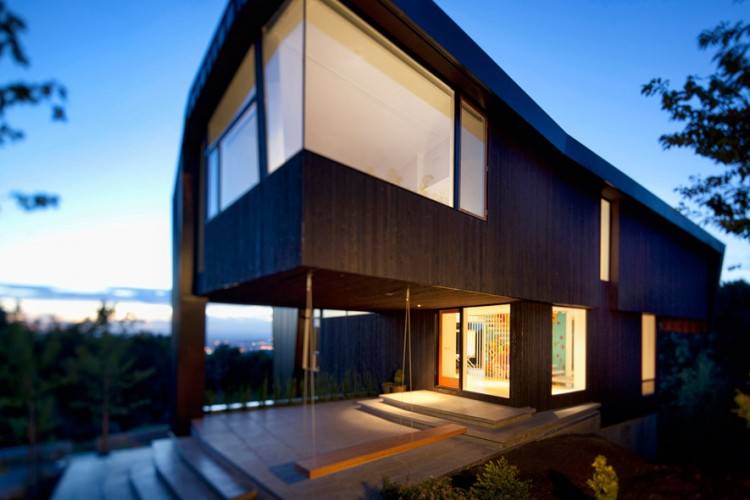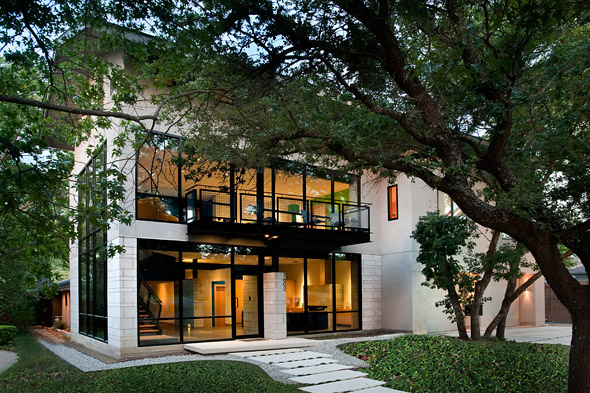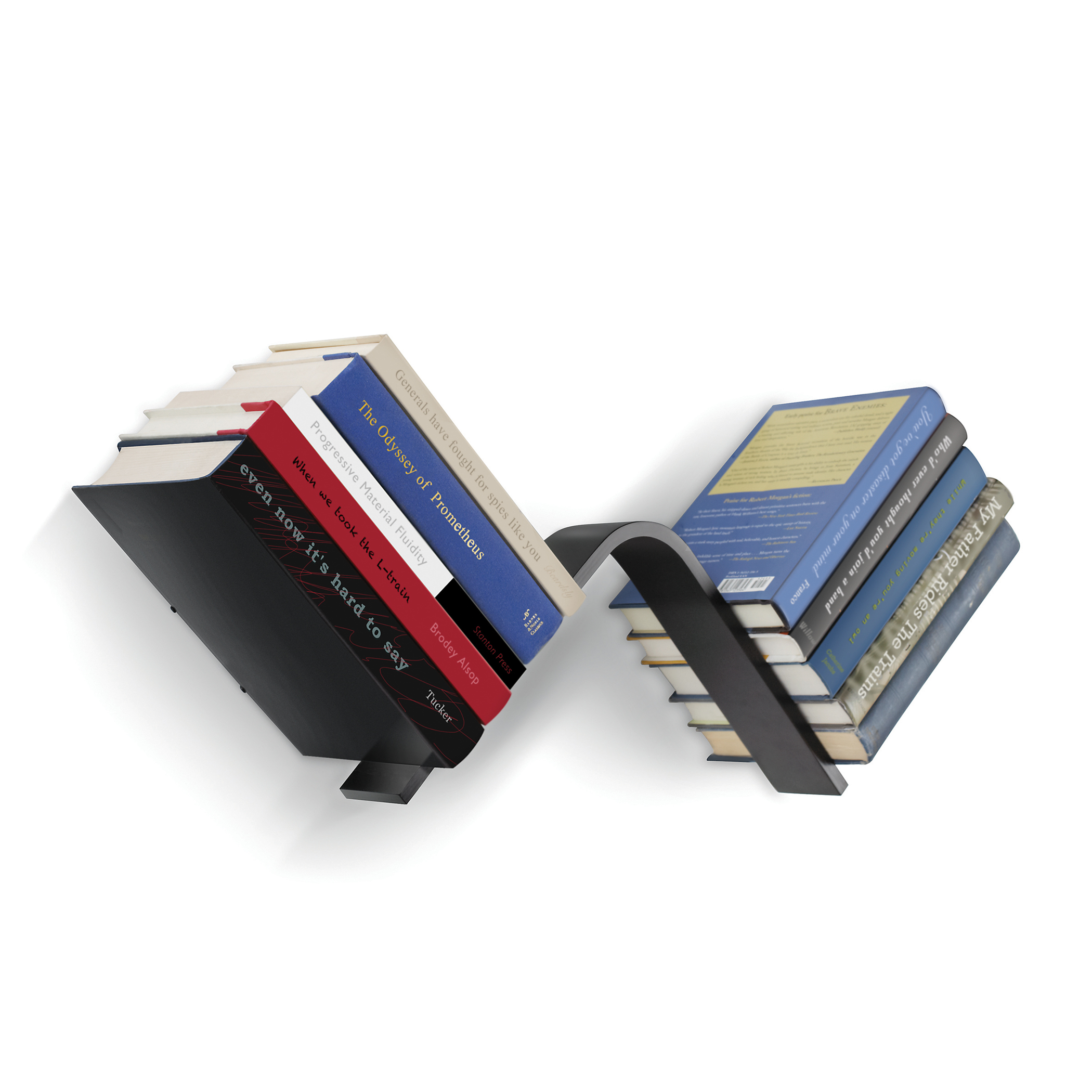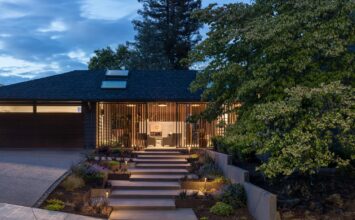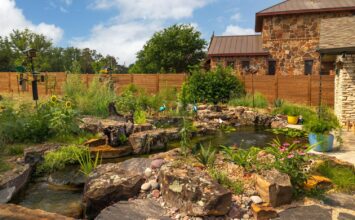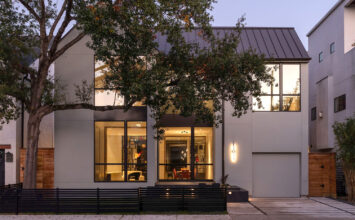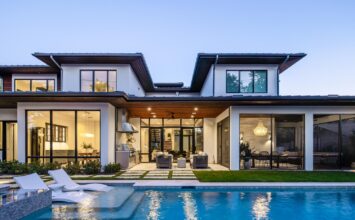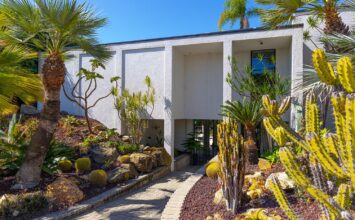
- Skylab Architecture: 8037 NW Prominence Court. Photo: Boone Speed
Last weekend’s Portland Modern Home Tour was one of our most popularly attended tours to date. The tour featured ten gems of modern design, masterfully curated by Brian Libby, a Portland-based journalist and critic specializing in architecture, visual art, and culture.
As the writer and editor of the Portland Architecture blog, Brian is an expert when it comes to the city’s culture of design. We sat down with him to talk about Portland’s modern renaissance, the perks of high-density living, and the art of place-making.
Q&A w/ Brian Libby
Born and raised just outside of Portland, can you walk us through some of the history of the area, architecturally speaking, and especially speak to the culture of modern design?
Portland started out as a relatively small, rough-and-tumble frontier town and trading post in the 19th century, but began booming in the early 20th century. As a result, the city has an impressive collection of early-20th century architecture, especially its cast-iron buildings along the waterfront and some impressive historically inspired Beaux Arts buildings by its most prominent local architect of the time, A.E. Doyle. Portland also played a significant role in early modernist architecture, specifically houses by architects like John Yeon and Pietro Belluschi, which blended boxy International-Style modernism with ranch and farm houses as well as Japanese influences. Belluschi would go on to become Portland’s best-known midcentury modernist, and several of his works remain local landmarks today, like the Portland Art Museum and the Equitable Building, the latter of which was the first class curtain-walled office tower built in the United States. In recent years, architects like Brad Cloepfil have made a splash nationally, while a host of up-and-coming firms have created modern neighborhoods like the Pearl District and South Waterfront. I think modernism is embraced here because the gray climate really calls for lots of glass, and the city has always had a culture of innovation.

- MOA Architecture: 1175 Westward Ho Road. Photo: Lincoln Barbour
As a writer and critic, you specialize in architecture, visual art, and culture. How do you think your upbringing in the Portland area influenced these passions of yours?
When I was growing up, the wonder my parents imparted to me was all about the Pacific Northwest’s natural beauty: its snow-capped mountains, rugged coastline and fertile, vineyard-friendly valleys. But as I grew into adulthood, I became fascinated with cities. I spent much of my 20s living on the East Coast, in New York City and Washington, DC, where I developed a passion for high-density, pedestrian and mass transit-oriented environments. But when I came back, I realized Portland was a real leader in the American west in terms of its progressive land-use policy: we’ve done a better job of preventing sprawl than any city west of the Mississippi. I realized becoming an architecture and visual art critic/journalist that Portland’s greatness starts with its urban planning. But it’s precisely the balance of natural world and urbanity that makes the city great. The fact that you can live in Portland proper without a car, accessing a host of arts and culture on foot, and then be able to access a diverse array of natural beauty with an hour’s drive, gives the city a kind of yin-yang of urbanity and nature that I not only appreciate, but really depend on. It’s not so much that Portland has famous buildings like some of our bigger-city neighbors, but that we’ve beaten most cities in the art of place-making.

- Holst Architecture: 1958 NW Raleigh St. Photo: Josh Partee
Looking toward the future, how do you see the Portland area evolving, culturally and architecturally?
The city is enjoying a kind of renaissance right now, with a bounty of great food and a robust arts scene, as well as a talented roster of designers (of buildings, sneakers and much more). But we have to make sure Portland doesn’t become a victim of its own success. Neighboring cities like San Francisco, for example, have seen an extreme dichotomy between affluent and poor citizens as development money has flown into the city. We don’t want forests of high-priced, 30-story condos sitting next to homeless camps. Portland also needs to be careful that our exemplary record for historic preservation doesn’t take a wrong turn. Local architectural landmarks like Memorial Coliseum and the Portland Building, for instance, have been threatened in recent times with demolition. All that said, it’s very exciting to sense that more than any other time in the city’s history, the eyes of the world are on us, viewing Portland as not just a vibrant, beautiful, affordable place, but as a way forward for the American city.
What are some of your favorite trends in modern design and living? How do you see these trends taking hold in Portland?
I like the fact that more people are embracing high-density living, be it by renting an apartment or purchasing a condo. Apartments especially have become more of a destination and the market has responded with more high-end design for renters. It’s also encouraging to see sustainable design go more mainstream. Of course when you get to Portland’s outer suburbs there are still, like everywhere, subdivisions full of awful cookie-cutter neo-historic McMansions that resemble a kind of bad Disneyland rip-off. But even in the ‘burbs, we’re also seeing more high-density and mass transit-oriented options become available.

- DAO Architecture: 1825 NE 19th Ave. Photo: DAO Architecture
As curator of the Portland Modern Home Tour, you get to interact with the architects and homeowners of some of the coolest modern homes in the city. How did you go about selecting the lineup for the tour? Do you have a favorite story (or two) from your interactions with these architects/homeowners?
It’s both great fun and a daunting challenge to find homes for this tour. I really wanted there to be a mix of contemporary homes from the past decade and midcentury-modern homes from the 1950s and ’60s, which we’ve been able to do. When I first began searching, I got lucky because the homeowners of a new home I was already writing a home magazine article about (the Skyline Residence by Skylab Architecture) agreed to participate in the tour. I also really hit it off with the homeowners, who work locally for Nike and thus have a shared passion for great design and art. They were as proud of their stairway mural by a Brazilian graffiti artist as they were of the house’s architecture or their Porsche in the garage, and I loved that. I also wanted the tour to represent some of the city’s best architects working today. That starts with the aforementioned Skylab, but I consider some of the other architects with homes on the tour, such as Ben Waechter (who previously worked under legendary Italian architect Renzo Piano) and Holst Architecture, to be among Portland’s very best.
